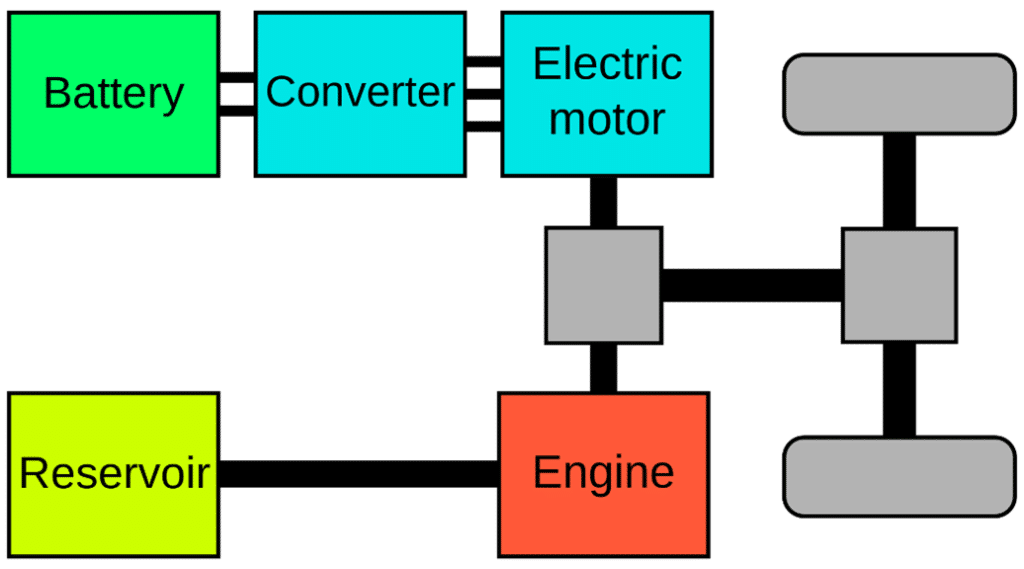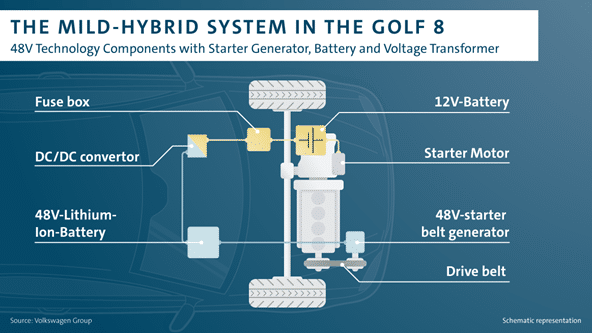Nimh vs. Li-Ion Hybrid EV Batteries
February 14, 2023 | A3 Global
Electric vehicles have taken all the publicity over the past few years, with companies like GMC airing ads during the 2023 Super Bowl. New EV models are being announced seemingly every month. However, carmakers are still producing hybrid vehicles. Why is that? In this post, we look at the advantages of hybrid vehicles and explore the different types available, including traditional hybrids, plug-in hybrids, and mild hybrids. These vehicles use nickel metal hydride (NiMH) or lithium-ion (Li-ion) batteries to lower fuel consumption and increase efficiency.
Batteries used in Traditional Hybrids
Traditional hybrids have been prevalent in the US since the Toyota Prius, the first mass-produced hybrid vehicle, launched in 2001. The standard Toyota Prius model has primarily used NiMH modules for the 202 V, 1.3 kWh hybrid battery. Toyota’s Hybrid Synergy Drive technology combines two electric motors with the internal combusion engine (ICE) to provide superb fuel efficiency – 58 MPG vs. 30 MPG for a similar sedan with the same engine. Regenerative braking uses the vehicle’s braking power to charge the hybrid battery pack. NiMH batteries provide a few advantages over Li-Ion batteries for hybrid vehicles:
- Greater operating temperature range (withstands extreme weather)
- Lower risk of fire (non-flammable electrolyte)
- Less expensive & easier to recycle

Because of these reasons, Toyota is still using NiMH batteries in many of its traditional hybrids. For example, the 2023 Toyota Sienna Hybrid uses a 288 V, 1.9 kWh NiMH battery. From a Toyota press release, “Critically, the Sienna has no plug, and there is no need to ever recharge the hybrid battery pack, and certainly no need to spend a couple of thousand dollars installing a battery charger in a garage. The Toyota Hybrid System II charges the hybrid battery automatically as the vehicle drives.” This is a reference to plug-in hybrids, which typically use Li-ion batteries and requires charging either at charging stations or at home.
Batteries used in Plug-In Hybrids
Plug-in hybrids debuted in the early 2010s with the Toyota Prius Plug In Hybrid (later renamed Toyota Prius Prime) and Chevrolet Volt. These hybrids are defined by their larger li-ion battery packs, plug-in charging requirement, and all-electric driving capability.
The Li-Ion batteries are typically 8 – 18 kWh, with much higher energy storage than other hybrid batteries. The benefit of using Li-Ion batteries is higher energy density – more power and energy compared to a similarly sized NiMH battery. Using the “all-electric mode,” a Prius Prime fully charged battery can power the vehicle for 25 miles. Plug-in hybrids are the closest in design to a fully electric vehicle. However, the benefit to fuel efficiency is on par with traditional hybrids (50 MPG).
Due to the higher cost of Li-Ion batteries, plug-in hybrids are generally more expensive than traditional hybrid vehicles. A third type, mild hybrids, uses an even smaller battery pack, which is only used to assist the ICE.
Batteries used in Mild Hybrids
The ICE is paired with a 48 V li-ion battery in mild hybrids to increase fuel efficiency. Cheaper to manufacture than other hybrid types, Volvo started equipping all of their 2023 cars with a mild hybrid system. The 48 V battery assists the engine only, not the transmission or drive gears. It can also utilize regenerative braking, like traditional hybrids.

The added efficiency is estimated to be 1 to 4 MPG, which is low compared to traditional or plug-in hybrids. In addition, mild hybrids cannot run solely on electric power. This system is designed to balance the benefits of hybrid driving with affordability and value.
Summary of NiMH and Li-ion Applications in Hybrids and Plug-in Vehicles:
- Mild hybrids cannot provide all-electric vehicle propulsion. The small Li-ion battery pack can only assist the engine and increase drive power.
- Full hybrids can provide all-electric propulsion for accelerating from a standstill (before the ICE takes over). This feature, along with regenerative braking, significantly increases fuel efficiency.
- Plug-in hybrids can operate solely on electric power for a limited range (25 miles) but typically functions similarly to a traditional hybrid. They have larger, more expensive battery packs that require plug-in charging.
To learn more, visit A3 Global.
